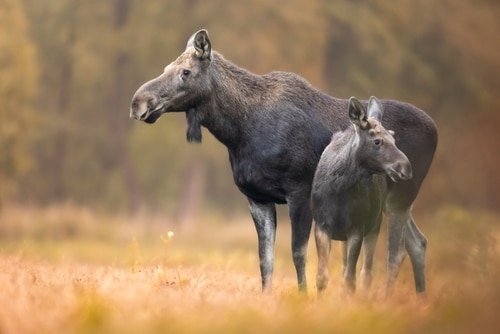Moose hunting is an exhilarating adventure, captivating outdoor enthusiasts worldwide. It’s more than a hobby; it’s a profound experience in the wilderness. This guide covers essential gear, clothing, and techniques for both seasoned and novice hunters.
Proper Gear for Moose Hunting
Proper gear is crucial for a successful and safe moose hunt. It’s not just about braving the elements; it’s about efficiency and stealth. Quality gear enhances safety, comfort, and your odds of encountering and successfully hunting a moose.
Essential Clothing: Layering for Success
Base, Insulating, and Outer Layers
Effective clothing for moose hunting involves a layering system: moisture-wicking base layers, insulating mid-layers, and protective outerwear. Merino wool base layers offer dryness and warmth, while fleece insulating layers provide lightweight warmth. Outerwear should be waterproof and breathable, equipped with ample pockets.
Camouflage: Blending with Nature
Camouflage clothing is vital for blending into the hunting environment. Choose patterns that match your hunting terrain and season. Consider the scale of the pattern and include camouflage in all clothing items, including accessories.
Waterproof and Scent-Blocking Materials
Waterproof and scent-blocking clothing is essential. It keeps you dry and masks your scent from the keen noses of moose. Look for advanced waterproof materials and scent-neutralizing fabrics. Regularly use scent-eliminating sprays and special detergents for added stealth.
Footwear: Keeping Warm and Dry
Insulated and Waterproof Boots
Insulated hunting boots are a must for cold climates, while waterproof boots with good traction are essential for navigating wet and slippery terrains. For added protection in dense forests, consider gaiters or snake-proof boots.

Optics and Navigation: Essential Tools
Binoculars, Spotting Scopes, and Range Finders
Good quality binoculars or spotting scopes are crucial for locating moose. Once spotted, use a range finder for accurate shooting. These tools are essential for spotting and successfully hunting moose.
GPS Devices and Compasses
In the vast wilderness, GPS devices or compasses are indispensable for navigation. They help track your location and ensure safe exploration and return.
Selecting the Right Rifle and Ammunition
Understanding Rifle Calibers and Choices
Selecting the right rifle and ammunition is a critical aspect of moose hunting. The size of the moose and the specifics of the hunting terrain significantly influence the choice of firearm. For smaller moose or in dense forests where shots are likely to be closer, a .270 Winchester is an excellent choice. Its lighter recoil and flat trajectory make it ideal for precise shooting in tighter spaces.
More powerful calibers are recommended for larger moose, especially in open terrains where long-range shots are common. The .338 Winchester Magnum is a popular choice due to its significant stopping power and effectiveness at longer distances. This caliber ensures that the hunter has enough power even at greater ranges to ensure a clean, humane kill.
The Importance of Bolt-Action Rifles
Bolt-action rifles are often the preferred choice for moose hunting. They are renowned for their reliability, durability, and accuracy, essential qualities in the demanding environments of moose hunting. The mechanism of a bolt-action rifle ensures consistent performance and precision, which is crucial when aiming at a large and tough animal like a moose.
Ammunition Considerations for Ethical Hunting
Choosing the right ammunition is as important as selecting the appropriate rifle. Ammunition that offers high-weight retention is crucial for ethical hunting. Such bullets ensure deep penetration and a controlled expansion upon impact, delivering the necessary force to quickly and humanely take down a moose.
For moose hunting, soft-point or bonded bullets are often recommended. These types of bullets are designed to expand upon impact, creating a larger wound channel without disintegrating, ensuring maximum energy transfer and a quick, humane kill.
Ballistics and Shooting Distances
Understanding the ballistics of your chosen ammunition is key. Different calibers and bullet types will perform differently at various ranges. For instance, while a .270 Winchester might be very effective at shorter ranges, its effectiveness can decrease at longer distances compared to a .338 Winchester Magnum.
It’s crucial to practice with your chosen rifle and ammunition to understand how it performs at different distances. This preparation ensures you can make accurate, ethical shots in the field, regardless of the situation.
Field Dressing Tools: Knives and Saws
Quality skinning and gutting knives are essential for efficiently processing your hunt. A reliable bone saw makes cutting through tough bones and joints easier.
Conclusion: A Well-Equipped Hunter
A successful moose hunt requires more than just skill; it demands the right gear. From clothing and footwear to rifles and field dressing tools, each item plays a pivotal role. Invest in quality gear for a safer, more effective hunting experience.






